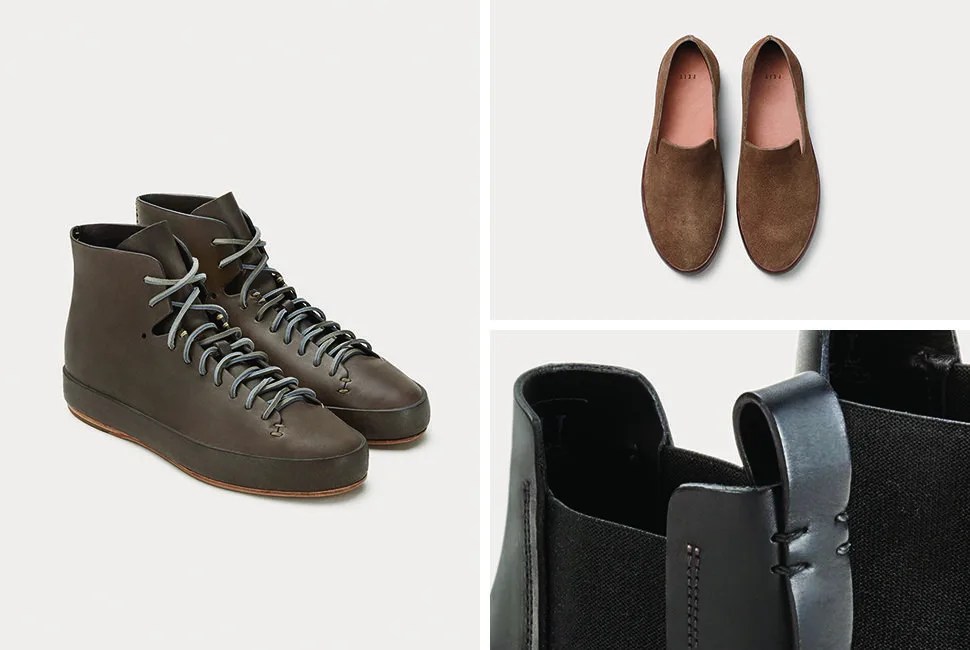In 2005, Tull Price founded FEIT with his brother Josh, as a reaction against mass-production factory models in the footwear industry. Price had witnessed the production method firsthand; nine years earlier he founded Royal Elastics, a popular shoe company that relied on large-scale production to meet consumer demand. After leaving Royal Elastics, Price went to Italy to study traditional shoemaking techniques, and subsequently founded FEIT.
FEIT’s shoe designs are unabashedly minimal, focused on construction and material. All of the shoes are made with a handmade Goodyear welt rarely found beyond bespoke dress shoes. Sneakers are made from one piece of leather and dyed with natural pigments, and they utilize natural latex rubber for the soles. Emphasis is on the craftsman and the product: natural materials and superior techniques.
Along with the brand’s stores in New York and Sydney, Price is planning on opening two new locations in 2017. Before launching FEIT’s fall collection, he took a moment to discuss the process behind the footwear.
Q: After years in the footwear industry, what inspired you to start FEIT?
A: In the mid-’90s, I was excited by the idea of globalization, and creating a brand that could speak the same language to twentysomethings all over the world. I recognized a void in the market and set out to create a shoe that existed between the popular skate and athletic styles. Royal Elastics became a favorite amongst underground party kids starting in London, and soon spread across Europe via high-end boutiques and features in the pages of the coveted magazines of the time, such as i-D and The Face. That ended with me mass producing products, and inevitably led to my understanding of its shortcomings. FEIT was a reaction, a desire to return to product and creating something special, unique and uncompromised.

Q: Tell me about your manufacturing processes.
A: We break up our manufacturing depending on the specialty of what we need. All of our lasts are made in Italy because Italy has the best last-makers. All of our materials are sourced from Italy, Sweden and England. All the design is done here in New York.
The technique that we use is called a hand-stitched technique, or a handmade Goodyear technique, in bespoke shoes. It is the way they used to make all men’s dress shoes and sturdy work boots. It used to be done in America, but it’s not really anymore. In Italy you’ve got a few little cobblers, old guys who still make their shoes that way, but mainly on a bespoke level.
